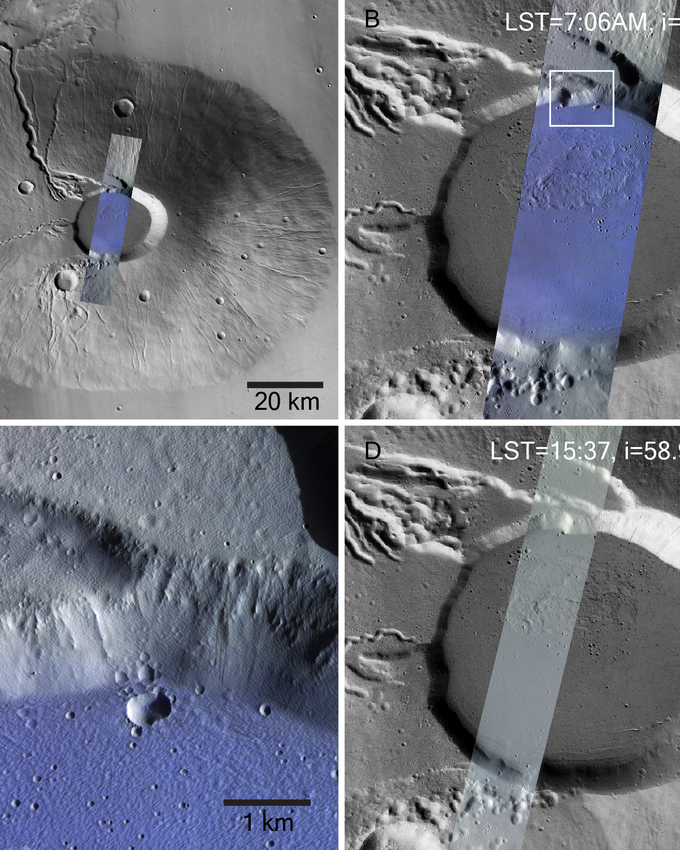For the first time, thin deposits of frost, probably as thick as a human hair, have been discovered on Mars. This observation was made possible thanks to a special camera developed under the guidance of a professor at the Institute of Physics at the University of Bern.
more on the topic
Questions and answers
Who decides what time it is – and how long the time change will last?
The images show (A) a view of the Ceraunius Tolus volcano taken by NASA’s Mars Reconnaissance Orbiter, with the morning image of CaSSIS visible within the blue rectangle that is enlarged in image (B). The white box in image (B) is enlarged in image (C) and shows spreading frost on the caldera floor, but not on the caldera rim. (D) Shows a CaSSIS image of the same region taken at a different time of day when there was no frost.
1 / 1
The CaSSIS Mars Camera was designed and built by an international team led by Nicholas Thomas from the Institute of Physics at the University of Bern.
1 / 1
Source: FM 1 Today
Sharon Rock is an author and journalist who writes for 24 News Globe. She has a passion for learning about different cultures and understanding the complexities of the world. With a talent for explaining complex global issues in an accessible and engaging way, Sharon has become a respected voice in the field of world news journalism.









